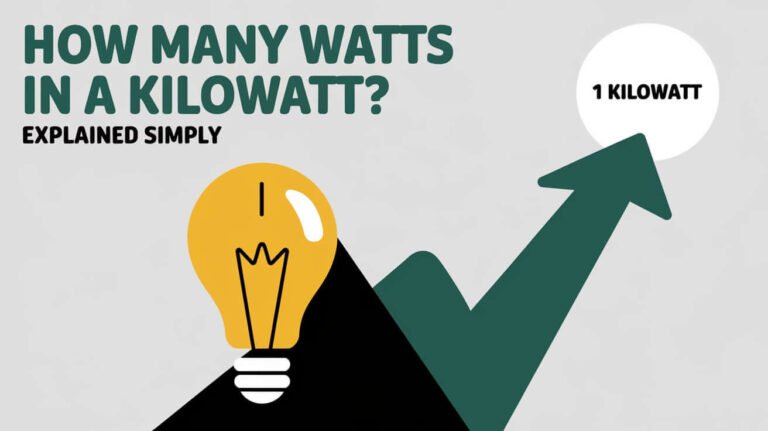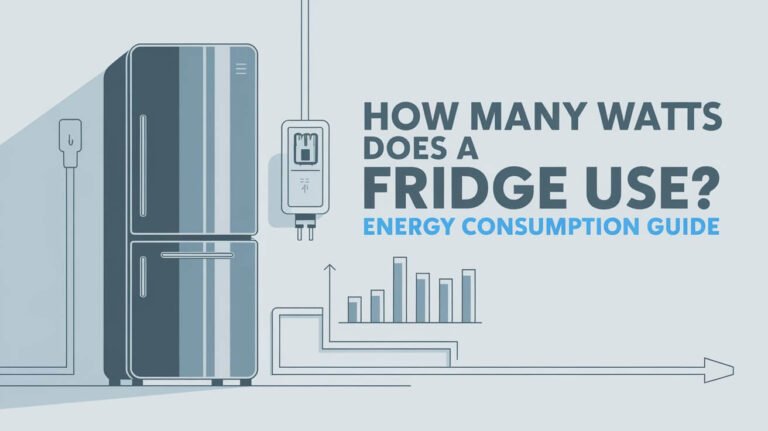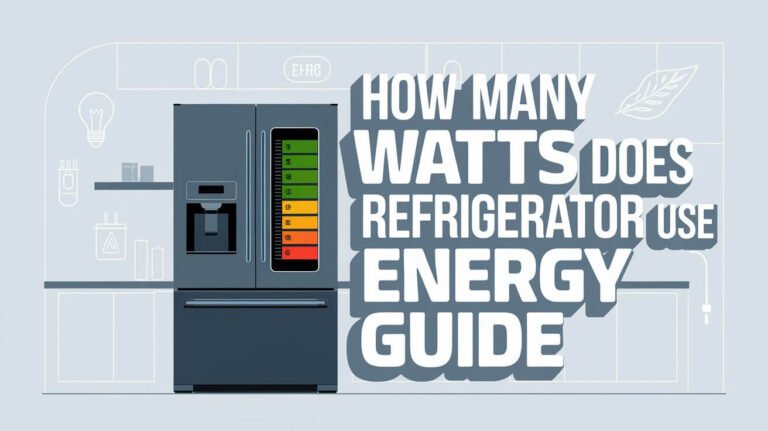
The watt is a key unit for measuring power. It’s vital in electrical systems and our daily lives. Knowing what a watt is helps us understand how power is measured in different ways.
In the U.S., watts show how fast electrical energy moves or changes. It’s a simple way to see how much energy devices use. This includes everything from home gadgets to big machines.
Watts help us know how much power devices need. This knowledge is important for using energy wisely. As we learn more about watts, we’ll see how they affect our daily activities.
The Basic Definition of a Watt
A watt is a unit of measurement for power or energy transfer rate. To grasp what a watt is, we need to look into its history and the scientist who created it. James Watt, a Scottish engineer, played a key role in the development of the watt unit.
In the late 18th century, James Watt worked on improving steam engines. His efforts led to the creation of the horsepower concept. This eventually evolved into the watt as a standard unit of measurement. Today, watts measure the power use of everything from home appliances to big machines.
Origins and History of the Watt Unit
The watt unit has seen many changes over the years. The term “watt” was first used in the late 19th century to honor James Watt. Over time, the definition of a watt has been updated to ensure accurate power measurement.
James Watt’s Scientific Legacy
James Watt’s work on the steam engine and the watt unit has greatly influenced engineering. His contributions to power measurement have allowed us to accurately measure energy use. The history of the watt unit shows James Watt’s innovative spirit and his commitment to improving machine efficiency.
Power Measurement Fundamentals
Understanding power measurement basics is key in engineering, physics, and technology. The watt unit measures energy transfer rate. Knowing the basics of power measurement helps us see why the watt is important. By exploring the watt unit history and James Watt’s legacy, we can better understand the importance of accurate power measurement.
| Unit of Measurement | Description |
|---|---|
| Watt (W) | Unit of power, representing the rate of energy transfer |
| Kilowatt (kW) | Unit of power, equal to 1,000 watts |
| Megawatt (MW) | Unit of power, equal to 1,000,000 watts |
Physics Behind Electrical Power
Electrical power physics is key to understanding how energy changes in different systems. It’s about the link between watts, voltage, and current. Simply put, electrical power is how fast energy moves through an electric circuit. The watt measures this, being one joule per second.
The science of electrical power is about voltage and current working together. Voltage pushes current through a circuit, and current is the flow of electrons. When you multiply voltage by current, you get the power used by a circuit. This is shown by the formula: Power (P) = Voltage (V) x Current (I). Knowing this helps with better energy use and management.
Important things that affect electrical power include:
- Energy conversion efficiency
- Voltage and current levels
- Resistance in the circuit
- Power factor, which is the ratio of real power to apparent power
These elements greatly influence how well an electrical system works. Understanding electrical power physics helps us see why managing energy is so important. It’s vital in both our homes and big industrial systems.
| Parameter | Unit | Description |
|---|---|---|
| Voltage | Volts (V) | Driving force behind electric current |
| Current | Amperes (A) | Flow of electrons through a circuit |
| Power | Watts (W) | Rate of energy transfer |
Watts in Daily Life
Knowing how watts affect our daily lives is key to saving energy. The wattage of household appliances greatly influences our energy bills. For example, a fridge uses 100-200 watts, while a dryer uses 3000-5000 watts.
Appliances with higher wattage ratings use more energy. Standby power, or vampire power, can also add up to 10% to our energy use. This happens when appliances are off but keep drawing power.
Common Household Appliance Ratings
- Refrigerator: 100-200 watts
- Clothes Dryer: 3000-5000 watts
- Television: 100-300 watts
- Computer: 65-250 watts
Energy Bills and Watt Consumption
Lowering energy use can cut down on bills. Choosing appliances with lower wattage and turning them off when not needed helps. Using power strips can also cut standby power use.
Standby Power Usage
Reducing standby power is easy. Unplug appliances when not in use or use smart power strips. These steps can lower energy use and bills.
| Appliance | Wattage | Standby Power Usage |
|---|---|---|
| Refrigerator | 100-200 watts | 5-10 watts |
| Clothes Dryer | 3000-5000 watts | 10-20 watts |
| Television | 100-300 watts | 5-10 watts |
Power Calculations Made Simple
To understand power calculations, you need to know the basics of watt calculations and power formulas. These are key to figuring out energy use and making smart choices about electricity. By using simple electrical equations, you can figure out how much power you use and cut down on your energy bills.
When doing watt calculations, think about voltage, current, and resistance. These help you use power formulas to find out how much power a device uses. For instance, the formula P = V x I (power equals voltage multiplied by current) is often used to find a device’s power use.
Here are some tips for making power calculations easier:
- Use online calculators or tools to do complex electrical equations
- Know the different units like watts, kilowatts, and megawatts
- Track your energy use and change your habits to use less
Learning watt calculations and power formulas helps you make better choices about energy use. It’s good for saving money on bills and for living more sustainably. Understanding electrical equations is a great first step.
| Unit of Measurement | Description |
|---|---|
| Watt (W) | Unit of power, equal to one joule per second |
| Kilowatt (kW) | Unit of power, equal to 1,000 watts |
| Megawatt (MW) | Unit of power, equal to 1,000,000 watts |
Direct Current vs Alternating Current Watts
Understanding the difference between Direct Current (DC) and Alternating Current (AC) is key in electrical systems. DC power is stable and used in devices like smartphones and laptops. AC power, on the other hand, is used in homes and industries because it can change voltage easily.
The choice between DC and AC power depends on the application. DC is best for constant voltage needs, while AC handles voltage changes better. The power factor, or the ratio of real power to apparent power, also matters in AC systems. It affects the system’s efficiency.
DC Power Applications
DC power is used in many areas:
- Electronic devices, such as smartphones and laptops
- Renewable energy systems, such as solar panels and wind turbines
- Electric vehicles, such as cars and buses
AC Power Measurements
Measuring AC power is more complex than DC. It involves finding the root mean square (RMS) of voltage and current. This is because AC power changes constantly, requiring special tools to measure its wattage.
Power Factor Considerations
In AC systems, the power factor is very important. It shows how efficiently the system uses power. A high power factor means efficient use, while a low one means wasted energy. Knowing about power factor helps improve energy use and reduce waste.
Solar Panels and Watt Production
Solar power is key to renewable energy. Photovoltaic systems turn sunlight into electricity. This electricity powers homes, businesses, and communities.
The efficiency of solar panels depends on several things. These include the panel’s quality, sunlight, and temperature.
Watt ratings are important for solar power. A higher watt rating means more electricity. This is good for bigger energy needs.
Photovoltaic systems can be made to fit specific energy needs. Their watt production is calculated to meet these needs.
Important factors for solar panel efficiency and watt production include:
- Panel quality and durability
- Sunlight exposure and angle
- Temperature and climate conditions
- System design and installation
Understanding how solar panels work helps us make better choices for renewable energy. As we move towards renewable energy, photovoltaic systems will be more important.
Watt-Hours and Energy Storage
Understanding watt-hours is key to seeing the value of energy storage. Watt-hours measure energy used or made by a device over time. In energy storage, watt-hours are important for figuring out battery capacity.
Battery capacity is a big deal in energy storage. It’s measured in watt-hours, showing how much energy a battery can hold and give out. For example, a 100 watt-hour battery can power 100 watts for one hour or 50 watts for two hours.
Battery Capacity Measurements
Measuring battery capacity is vital for checking how well energy storage systems work. These measurements show how much energy a battery can store and release. Factors like battery type, age, and how deep it’s discharged affect its capacity.
Power Storage Systems
Systems like batteries and supercapacitors are key for storing extra energy from renewables like solar and wind. They keep the grid stable and provide energy when it’s needed most. Popular systems include:
- Lithium-ion batteries, known for their high energy density and long lifespan
- Lead-acid batteries, commonly used in automotive and industrial applications
- Flow batteries, which offer a high capacity for long-duration energy storage
Watt-hours and energy storage are closely related. Knowing about watt-hours helps us understand how well energy storage systems work. By looking at battery capacity and power storage systems, we can make better energy storage solutions for our needs.
Common Watt Conversion Methods
Understanding watt conversion is key in different power systems. It involves changing watts to other power units like kilowatts and megawatts. This is important in fields like engineering and energy management.
To convert watts, knowing the power unit equivalents is necessary. This knowledge helps in understanding energy use of devices and systems.
Some common ways to convert watts include changing them to horsepower, British Thermal Units (BTU), and joules. For example, 1 watt equals 1.34102 horsepower, 3.41214 BTU per hour, and 1 joule per second. These conversions help in managing energy use.
Here are some important watt conversion factors to remember:
- 1 watt (W) = 1 joule per second (J/s)
- 1 kilowatt (kW) = 1000 watts (W)
- 1 megawatt (MW) = 1,000,000 watts (W)
- 1 gigawatt (GW) = 1,000,000,000 watts (W)
These conversion factors are vital for understanding power and energy units. They help in converting between different units. This makes managing energy easier and more efficient.
Industrial and Commercial Power Applications
In the United States, a lot of energy is used by industries. It’s important to know how much power manufacturing equipment needs. This helps businesses save money and protect the environment.
Equipment like pumps, motors, and conveyor systems use a lot of power. Companies can cut down on this by:
- Doing energy audits to find where they can save
- Switching to more efficient equipment and tech
- Using power factor correction systems to cut down on energy loss
Commercial Building Power Management
In commercial buildings, managing power is key. It helps keep systems like lighting, heating, and cooling running well. By using smart technologies, building owners can lower their energy use and make their power more efficient.
Bottom Line
Understanding watts is key in our energy-driven world. These power measurement heroes are essential in our daily lives. They power our homes, gadgets, and even renewable energy systems.
By learning about watts, we can use energy wisely. This helps us save money and protect the environment. It’s a step towards a more sustainable future.
Whether you’re checking your appliances or managing a big building’s power, this knowledge helps. It lets you use energy better, cut costs, and reduce harm to the planet. You get to enjoy modern tech without harming the environment.
As we say goodbye, remember the importance of watts. Knowing about watt importance, power measurement applications, and energy efficiency opens doors. Use this knowledge to create a better, greener future. The power is yours – use it well.
Popular Questions
What is a watt?
A watt is a unit of power. It shows how fast energy is used or made. It’s the basic unit for electrical power, showing how much work is done or energy used each second.
How are watts related to power measurement?
Watts are key for measuring electrical power. They link voltage and current, helping us understand the power in electrical systems.
What are some examples of watt usage in daily life?
Watts measure the power of household items like light bulbs and TVs. Knowing a device’s wattage helps you use energy wisely and save money.
How can I calculate power consumption using watts?
To find power in watts, use the formula: Power (in watts) = Voltage (in volts) x Current (in amperes). This formula helps you figure out what devices need to run.
What is the difference between direct current (DC) and alternating current (AC) in terms of watts?
Watts are measured differently for DC and AC systems. For DC, it’s voltage times current. For AC, power factor matters because it changes how voltage, current, and watts relate.
How do solar panels produce watts?
Solar panels make electricity from sunlight. The wattage they produce depends on their size, efficiency, and sunlight exposure.
How are watts related to energy storage and watt-hours?
Watt-hours (Wh) measure energy over time. It’s watts times hours. This unit is used for battery capacity and energy storage.
What are some common watt conversion methods?
You can convert watts to kilowatts, horsepower, or BTUs. Knowing these conversions helps compare power across different systems and uses.




